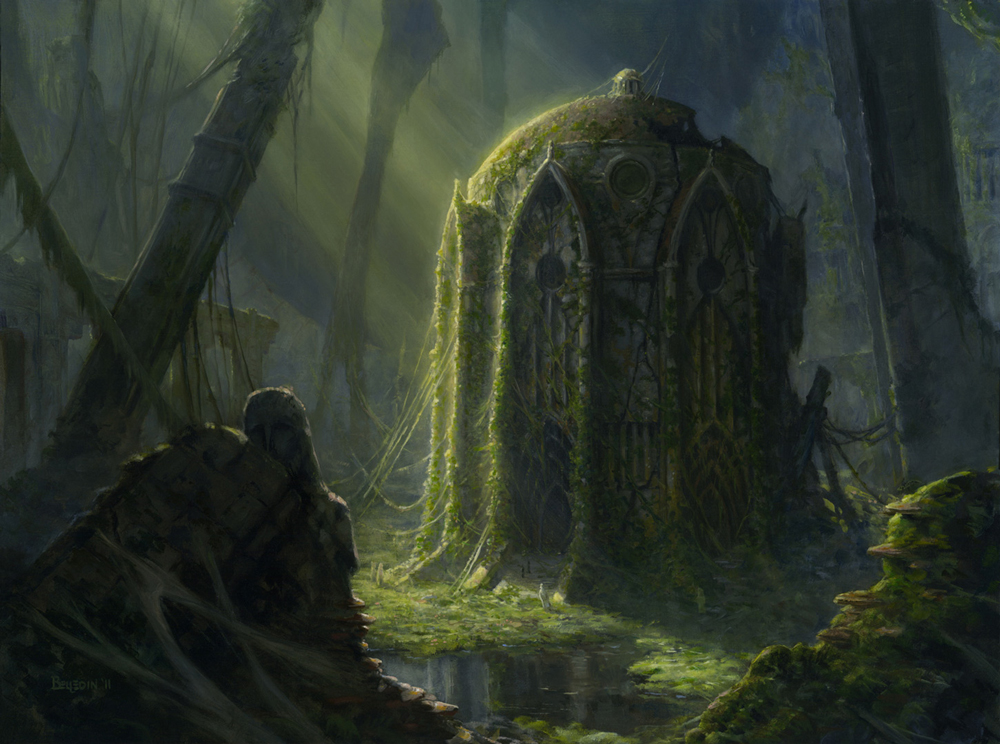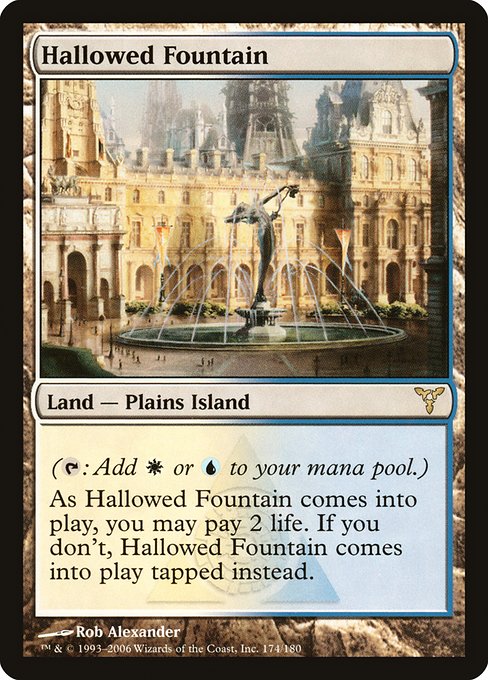Are you a Quiet Speculation member?
If not, now is a perfect time to join up! Our powerful tools, breaking-news analysis, and exclusive Discord channel will make sure you stay up to date and ahead of the curve.
Welcome back, readers!
How many times have you looked at a card and thought, "this is a sure thing?" Did others agree—maybe here on Quiet Speculation, be it writers or fellow Insiders—giving you that excited feeling of having picked a home run? Did you run out to your favorite stores, online or in person, to buy a bunch of copies of said card and giddily move them into your speculation box?
And lastly, how many times have you watched specs like this fail to pan out as the price remained stagnant or dropped? This is, of course, the speculator's nightmare. Today we'll be focusing on why this can happen so you can guard yourself against it.
Sure thing
n.An outcome that is certain or assured.
The important thing to remember is that the future is never known. Unforeseen events can and do cause outcomes, even those with a very high probability of occurring, not to happen as we expected. This may seem rather amorphous, so let's look at a real life example.

This is Johnny Manziel. He was a star quarterback for Texas A&M University, won the Heisman Trophy, and was drafted in the first round of the 2014 NFL draft. Many people thought he was going to be the next all-star quarterback for the NFL, having shown incredible talent in college. The Cleveland Browns drafted him as their 22nd pick in the draft.
However, there were signs of off-the-field troubles and he was a known partier. He is currently a free agent after suffering from substance abuse and showing up in the news for physical abuse of his then girlfriend.
Now for those who don't know or follow American football, this may not hit home, but many people considered him a "sure bet" to succeed in the NFL—enough so that the Cleveland Browns actually sacrificed their second first-round pick to draft him. That didn't pan out for them.
What does this have to do with Magic speculation? The point is that circumstances outside of the game (but in this case not outside the player's character, which again was somewhat known) can interfere with our expectations.
The same problem can happen with Magic cards considered "sure things." The best example I can think of currently are the shocklands from Return to Ravnica.
A lot of us (writers, speculators, etc.) thought these were going to be solid long-term investments with nice continued growth. After all, they were staples in almost every Modern deck, they are great in Commander, and before the reprint the original Ravnica block versions were pushing $40-$50.
The Danger of Confirmation Bias
For shocklands, buying the reprinted versions at $6-$8 each seemed like an easy money-maker if we had a little patience. All they had to do was return to even just half of the originals' high price and we'd have doubled up. Every reason we could come up with told us to keep buying more, and every person we talked to agreed. This is confirmation bias.
Confirmation bias
n.The tendency to interpret new evidence as confirmation of one's existing beliefs or theories.
Now to be fair, some have seen some gains (Steam Vents comes readily to mind), but these lands are four years old already and Modern as a format has shown it has staying power. So why have they remained relatively stagnant all this time?
The simple reason is that there isn't enough demand. The more complicated reason is that confirmation bias got in the way of the natural price progression.
So many people thought these were a "sure thing" that tons and tons of Return to Ravnica packs were opened or redeemed online, leading to a huge glut in supply. Normally this glut would cause prices to drop significantly, but because everyone assumed they were a sure thing (and I include myself here) we kept buying them and propping up the price.
If we couple that with a reduction in the growth rate of the Modern player base, we no longer have the expected increase in demand from new players entering the marketplace. That's what was supposed to keep the propped-up price floating and then eventually cause its rise. It didn't help that many Standard-only players with even an inkling of interest in Modern kept their playsets "just in case," so they wouldn't have to buy them later.
And that is the danger of confirmation bias. Many of us ignored the possibility of other speculators, along with us, inflating the price of shocklands by buying up too many. We ignored the possibility that the Modern format could plateau and that demand for these "sure things" could ebb. We ignored the possibility that the people we expected to enter the format at a later date might just keep their current copies so they wouldn't have to buy them later.
Reexamining Assumptions
"The wisest rule in investment is: when others are selling, buy. When others are buying, sell."
- Johnathan Sacks
This is a pretty famous investment quote and one that we all need to remind ourselves about. It's the reason we at QS always say, "leave the last 10% for the next guy." It's not because we want you not to maximize your profits. It's because we know the easiest time to sell is when everyone is buying, and the hardest time to sell is when everyone is selling—and you only make profits when you sell.
So let's look at some other "sure things" we might currently be investing in and consider the possibility that they won't pan out. That isn't to say these investments are a bad idea, but just that the conventional wisdom of their certainty may not be founded.
Fetchlands
The fetches present all the same arguments we had with shocklands. They're Modern and Commander staples and are even played in Legacy and Vintage. Yet here we are six months after rotation and they too haven't budged in price.
Now you can make a fair argument that six months isn't a lot of time and that these are more long-term investments. But one could also argue that fetches are following the pattern established by shocks—that Khans of Tarkir was also opened into oblivion and that the same people who bet on the shocklands did so on the fetchlands, propping the price up by hoarding them.
The big danger here is that WoTC can reprint any non-Reserved List cards whenever they want. So while we can't guarantee that the price will go up on any of these, with a reprint the price will almost assuredly fall (barring a sudden unexpected increase in the playerbase at the same time).
Dual Lands
Dual lands used to be the gold standard for MTG trading. If someone came up to you offering to trade an Underground Sea for a bunch of Modern cards you made that trade. After all, if it was on the Reserved List then you were safe from a reprint, and it was considered a "sure thing" that this staple would hold its value or go up.
But what actually makes duals a "sure thing?" We've seen interest in the Legacy format drop with the scale-back of major events, led by Star City Games (who retired the Sunday Legacy Open Series) and Wizards (who are offering just two Legacy GPs in all of 2017).
Some of this waning demand can be met by Commander players, but they rarely need four copies. And while I know a lot of Commander players who would love to play with duals, many wouldn't ever pay their current prices for the privilege.
Expeditions
With the release of Battle for Zendikar, WoTC introduced a new "ultra-rare" chase card in the Expedition cycle. We got some beautiful, full-art, foil, multi-format staples that were sure to be in high demand thanks to their beauty and rarity.
But so far they've been a relative flop (for the most part). They are more common than many initially believed, and prices have plunged on most of them, with an average drop of around 19% since release. I'd be very cautious of investing heavily into any of the new Masterpieces.
Conclusion
The purpose of this article is not to scare anyone away from MTG investing and speculating, but simply to remind you of the risks. The very fact that the community regards a card as a "sure thing" should throw up some warning flags. In these cases, you want to look closely at the reasons everyone is touting its guaranteed success, and consider what factors could lead to it not panning out.










This is an interesting observation. Since Return to Ravnica, prices across the board have been noticeably deflated compared to previous sets (original innistrad et al). Could the reprinted shocklands in RTR have caused a groundswell of speculators to enter the game at the same time? That may explain the lack of value in sets since RTR. I know I only started trading speculatively around this time. Speculators artificially raising demand of in-print sets may keep prices down for years (and to think many magic players blame speculators for keeping prices high heh).
That’s definitely one possibility, though it may not be solely attributed to speculators but the general consensus of the player base to speculate on modern. The flat card growth on many of these staples indicates a lack of demand, though I don’t have enough information to understand the reason for that lack of demand. As I stated above, I feel it’s likely several factors.